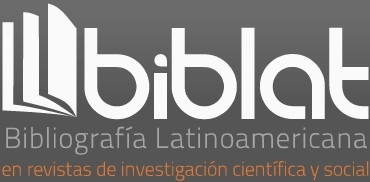Where does the concept of immanence fit in Saussure’s linguistic and semiological reflection?
DOI:
https://doi.org/10.35494/topsem.2014.1.31.30Keywords:
immanence, transcendence, synchrony, diachrony.Abstract
Saussure rarely —or perhaps never— uses the term immanence.Despite this, his reflection clearly falls within an immanentist
approach, but in a particular way. In considering the place
and function of immanence in Saussurean reflection, we have
found it useful to use a comparative approach. After a brief
review of a decidedly non-immanentist theory of language
(that of Spinoza), we address Hjelmslev’s theory, which explicitly
upholds immanentism. It is in constant reference to said
theory that we contemplate Sassure’s. Similarities between
the two soon arise, as do differences, the latter primarily with
regard to the matter of the diachronic evolution of languages.
A r evealing i ndication of t he d ivergence b etween S aussure
and Hjelmslev is that, unlike the former, the latter does not
take the opposition between synchrony and diachrony into
consideration.
Downloads
References
ENGLER, Rudolf (1968-1989). Édition critique du Cours de linguistique
générale. t. I. Wiesbaden : Otto Harrassowitz.
GODEL, Robert (1957). Les sources manuscrites du Cours de linguistique générale de Ferdinand de Saussure. Genève : Droz.
HJELMSLEV, Louis (1966). Le langage. París : Les éditions de Minuit.
HJELMSLEV, Louis (1971). Prolégomènes à une théorie du langage. París : Les éditions de Minuit.
HJELMSLEV, Louis (1993 [1943]). Omkring Sprogteoriens Grundlæggelse. Copenhagen: The Linguistic Circle of Copenhagen.
MARINETTI, Anna e MELI, Marcello (1986). Ferdinand de Saussure :
le leggende germaniche. Este (Padua): Libreria Editrice Zielo.
SAUSSURE, Ferdinand de (1916 [1922-1986]). Cours de linguistique générale. París : Payot.
SAUSSURE, Ferdinand de (2002). Écrits de linguistique générale. París : Gallimard.
SAUSSURE, Ferdinand de (2011). Science du langage. De la double essence du langage. Édition des Écrits de linguistique générale établie par René Amacker.
SOFIA, Estanislao (2014 [1913]). Collation Sechehaye du Cours de linguistique générale. Limoges : Lambert-Lucas.
SPINOZA, Baruch de (1954). Pensées métaphysiques. En OEuvres
complètes. París : Gallimard (collection la Pléiade).
La traducción de las citas sigue estas ediciones en español:
SAUSSURE, Ferdinand de (1993). Curso de lingüística general. Trad.,
prólogo y notas de Amado Alonso; edición crítica preparada por
Tulio de Mauro. Madrid: Alianza.
SAUSSURE, Ferdinand de (2004). Escritos sobre lingüística general. Trad. de Clara Ubaldina Lora Mur. Barcelona: Gedisa.
HJELMSLEV, Louis (1980). Prolegómenos a una teoría del lenguaje.
Trad. de José Luis Díaz de Liaño que sigue las pautas de Emilio Alarcos Llorach (1951 [1969]). Gramática estructural. Madrid: Gredos.
HJELMSLEV, Louis (1968). El lenguaje. Trad. de María Victoria Catalina. Madrid: Gredos.
Downloads
Published
How to Cite
Issue
Section
License

Tópicos del Seminario is licensed under a Creative Commons Reconocimiento-NoComercial-CompartirIgual 4.0 Internacional License.














